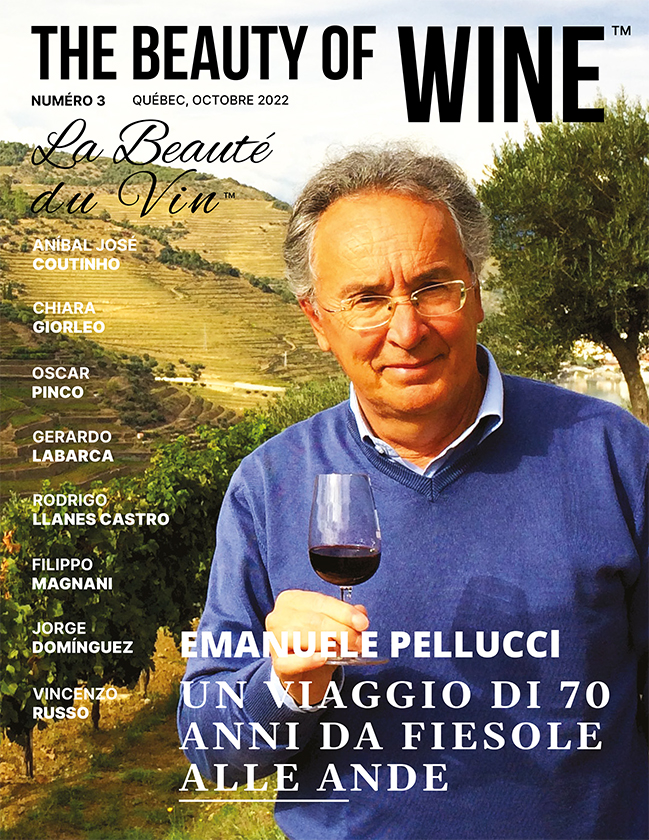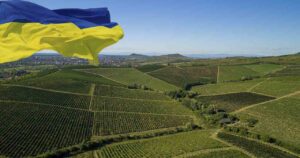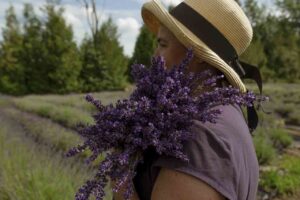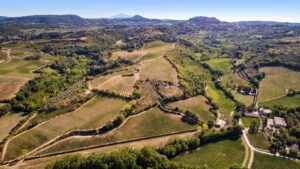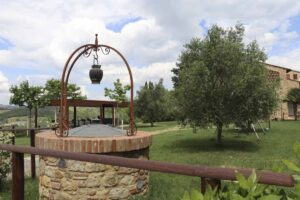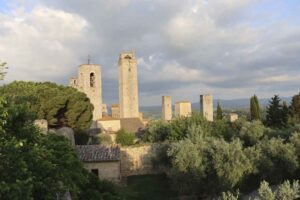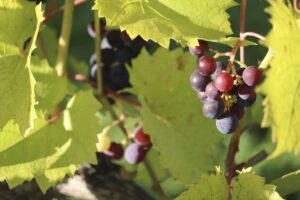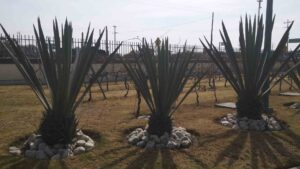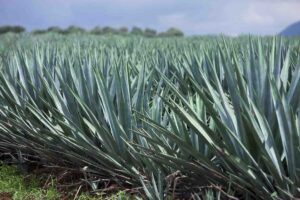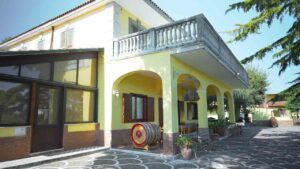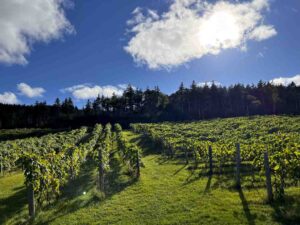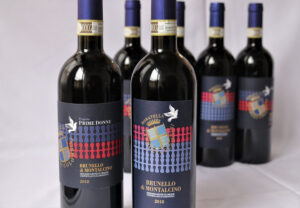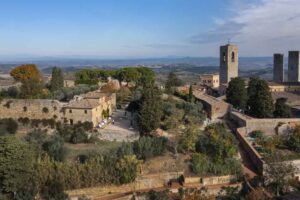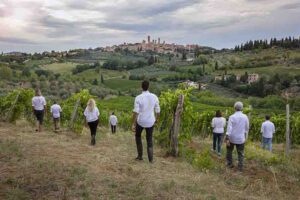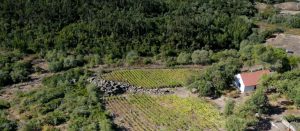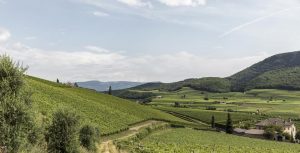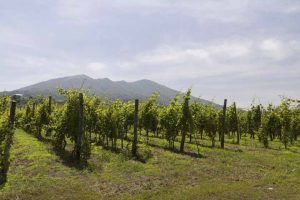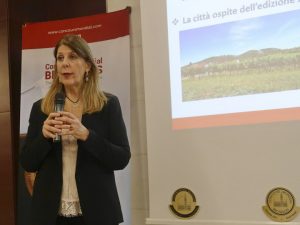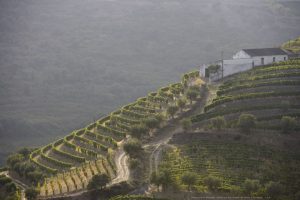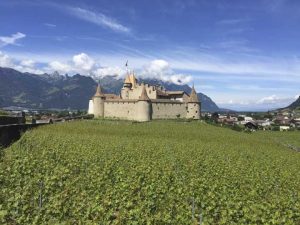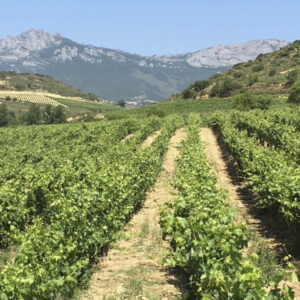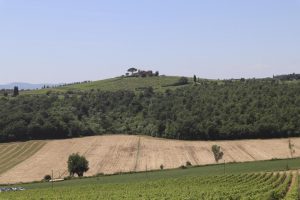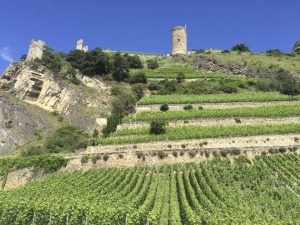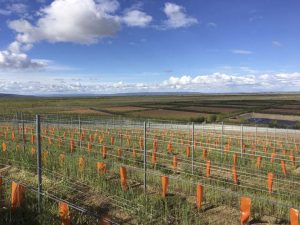Vesuvio: storia e fascino dei vini del vulcano più famoso al mondo
**The translation is at the bottom**
Una storia dalle radici profonde che incide direttamente sul carattere e sul racconto di vini di grande personalità.
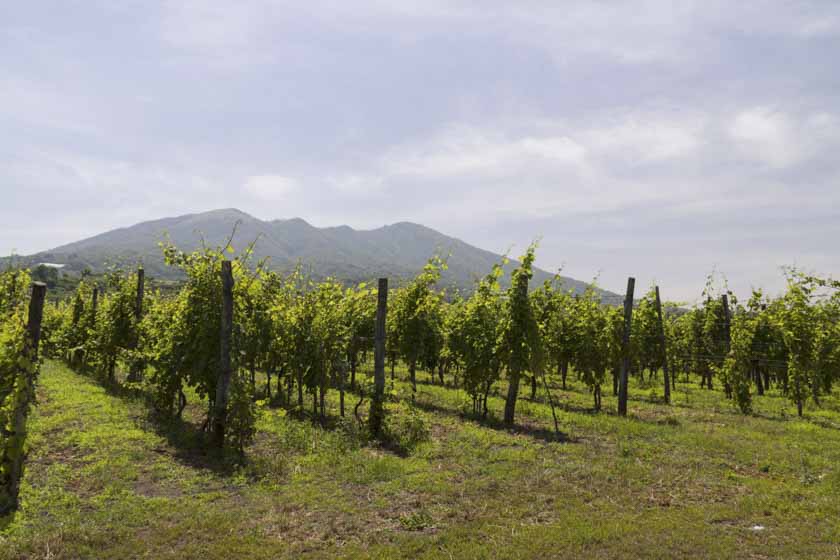
Siamo nell’Italia del Sud, in Campania, una delle 20 regioni italiane e, più precisamente, in provincia di Napoli direttamente sulla costa che delinea un clima mediterraneo ma, proprio grazie alla presenza del vulcano, il noto Vesuvio, non sono da trascurare le altitudini, centrali in ottica di mitigazione e differenziazione di micro territori. Ma in questo senso il discorso si fa complesso, innanzitutto perchè non abbiamo solo un rilievo, l’attuale vulcano, ma si tratta di un complesso: Monte Somma – Vesuvio in quanto, dopo la fatidica eruzione del 79 D.C., non a caso denominata “eruzione di Pompei” a causa della distruzione dell’antica città di Pompei e dintorni (oggi visitabile come sito archeologico), un’esplosione laterale provocò lo sdoppiamento. Il Monte Somma è più interno e fresco, come dimostra la vegetazione più verde, e con presenza anche di argilla nei terreni; il Vesuvio è più recente geologicamente, stratificato date le numerose eruzioni, più vicino al mare quindi più caldo. Non basta, considerando che i vigneti si sviluppano in senso circolare su entrambi i picchi, è opportuno identificare le vigne “lato-mare”, più calde, e quelle “lato-terra”, più fresche, per ciascuno dei due rilievi individuando, così, almeno 4 sottozone.
Più immediata l’analisi del terreno che è, evidentemente, vulcanico con presenza di materiali più pesanti (lapilli, pomici) e più leggeri (le ceneri vulcaniche che in diverse zone li rendono scuri), leggeri e sciolti, drenanti. Una composizione che rende le viti difficilmente attaccabili dalla temuta fillossera che ha visto le varietà di quasi tutto il mondo innestate su piede americano maggiormente resistente al terribile insetto. Ed ecco un interessante elemento di caratterizzazione: il 90% delle viti della zona sono a “piede franco”, senza innesto.
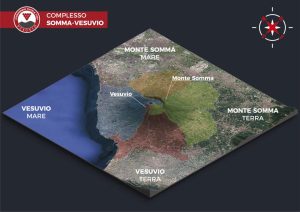
Piedirosso per rosati e rossi, anche nella versione spumante, riserva e superiore (maggiore alcool e struttura); e Caprettone e/o Coda di Volpe per i bianchi (anche nella versione spumante, superiore, passito e liquoroso) sono le varietà tipiche alla base delle tipologie previste dalla DOC Vesuvio il cui disciplinare consente un blend a base di queste uve. La dicitura “Lacryma Christi” (dal latino “lacrima di Cristo”), che può essere affiancata alla denominazione, arricchisce il fascino del racconto richiamando l’antica leggenda: un pezzo di Paradiso precipitò nel Golfo di Napoli quando Lucifero fu scacciato. Cristo, addolorato per la perdita di colui che era stato l’angelo più buono, pianse e, dove caddero le sue lacrime, nacquero delle viti il cui vino si chiamò per questo Lacryma Christi.
A queste c’è da aggiungere la sezione dei mono-varietali che, oltre a Caprettone e Piedirosso, si allarga anche ad altre uve, comunque regionali, come Aglianico e Falanghina già ammesse, insieme ad altre, nei blend di cui sopra.
Non solo, altra varietà assolutamente territoriale è la Catalanesca, portata in zona dagli spagnoli poi registrata come uva “da tavola” per sfruttarne produttività e capacità di conservazione grazie alla buccia spessa e, solo più recentemente, riabilitata come uva da vino di ottima qualità con la IGP Catalanesca del Monte Somma.
Il lavoro del relativo Consorzio di Tutela Vini di recente costituzione si sta facendo sentire in termini di riorganizzazione interna e promozione di un territorio tanto ricco e caratterizzato.
Cosa aspettarci da questi vini? Mentre la Catalanesca, alle giuste condizioni (terreni più ricchi altitudini superiori), consente la produzione di bianchi di maggiore concentrazione e rotondità, i bianchi del territorio hanno un profilo sottile, più spesso delineato da mineralità e scia sapida con quella neutralità che li rende perfetto veicolo del territorio. I rossi offrono un sorso dinamico, raramente di grande struttura e arricchito da una vena austera tipica del territorio vulcanico con sfumature variabili e grande versatilità.
Vi aspettiamo a Napoli!
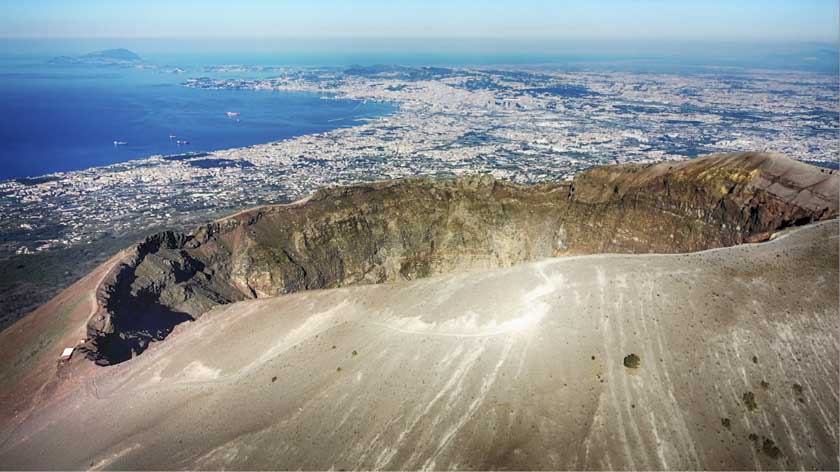

Vesuvius: history and charm of the wines of the most famous volcano in the world
By Chiara Giorleo
A story with deep roots that directly affects the character and storytelling of wines of great personality.

We are in Southern Italy, in Campania, one of the 20 Italian regions and, more precisely, in the province of Naples directly on the coast which outlines a Mediterranean climate but, thanks to the presence of the volcano, the well-known Vesuvius, the altitudes, central in terms of mitigation and differentiation of micro territories. But in this sense, the discussion becomes complex, first of all, because we do not have only one relief, the current volcano, but it is a complex: Monte Somma – Vesuvius since, after the fateful eruption of 79 AD, not by chance called ” eruption of Pompeii” due to the destruction of the ancient city of Pompeii and its surroundings (which can now be visited as an archaeological site), a lateral explosion caused the doubling. Monte Somma is more inland and cooler, as evidenced by the greener vegetation, and also with the presence of clay in the soil; Vesuvius is geologically more recent, stratified given the numerous eruptions, closer to the sea and therefore warmer. Considering that the vineyards develop in a circular direction on both peaks, it is advisable to identify the warmer “sea-side” vineyards and the cooler “land-side” ones, for each of the two reliefs, thus identifying, at least 4 subzones.
More immediate is the analysis of the soil which is evidently volcanic with the presence of heavier materials (lapilli, pumice) and lighter (volcanic ashes which make them dark in different areas), light and loose, draining. A composition that makes the vines difficult to attack by the dreaded phylloxera which has seen varieties from almost all over the world grafted on American roots which are more resistant to the terrible insect. And here is an interesting element of characterization: 90% of the vines in the area are “ungrafted”, without grafting.
Piedirosso for rosé and red wines, also in the sparkling, reserve and superior versions (higher alcohol and structure); and Caprettone and/or Coda di Volpe for the whites (also in the

sparkling, superior, raisin and fortified versions) are the typical varieties at the base of the typologies envisaged by the Vesuvio DOC, whose discipline allows a blend based on these grapes. The wording “Lacryma Christi” (from the Latin “tear of Christ”), which can be placed alongside the denomination, enriches the charm of the story by recalling the ancient legend: a piece of Paradise fell into the Gulf of Naples when Lucifer was driven out. Christ, saddened by the loss of the one who had been the best angel, wept and, where his tears fell, vines were born whose wine was called Lacryma Christi. To these we must add the section of mono-varietals which, in addition to Caprettone and Piedirosso, also extends to other grapes, however regional, such as Aglianico and Falanghina already admitted, together with others, in the blends mentioned above. Not only that, another absolutely territorial variety is the Catalanesca, brought to the area by the Spaniards and then registered as a “table” grape to exploit its productivity and storage capacity thanks to the thick skin and, only more recently, rehabilitated as an excellent quality wine grape with the Catalan IGP of Monte Somma.
The work of the related and recently established Consorzio di Tutela Vini is making itself felt in terms of internal reorganization and promotion of such a rich and characterized territory.
What to expect from these wines? While the Catalanesca, under the right conditions (rich soils at higher altitudes), allows the production of whites of greater concentration and roundness, the whites of the territory have a thin profile, more often outlined by minerality and a sapid trail with that neutrality that makes them perfect land vehicle. The reds offer a dynamic sip, of great structure and are enriched by an austere vein typical of the volcanic territory with variable nuances and great versatility.
We are waiting for you in Naples!

Récents articles
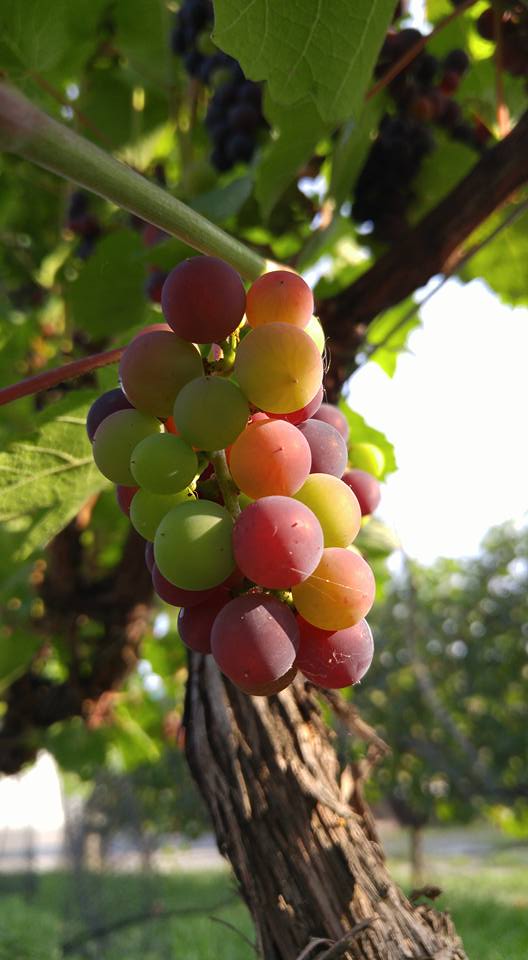
Stay tuned for new articles and industry trends !
Subscribe to our newsletter and make sure you don’t miss the publication new editions of the magazine!




